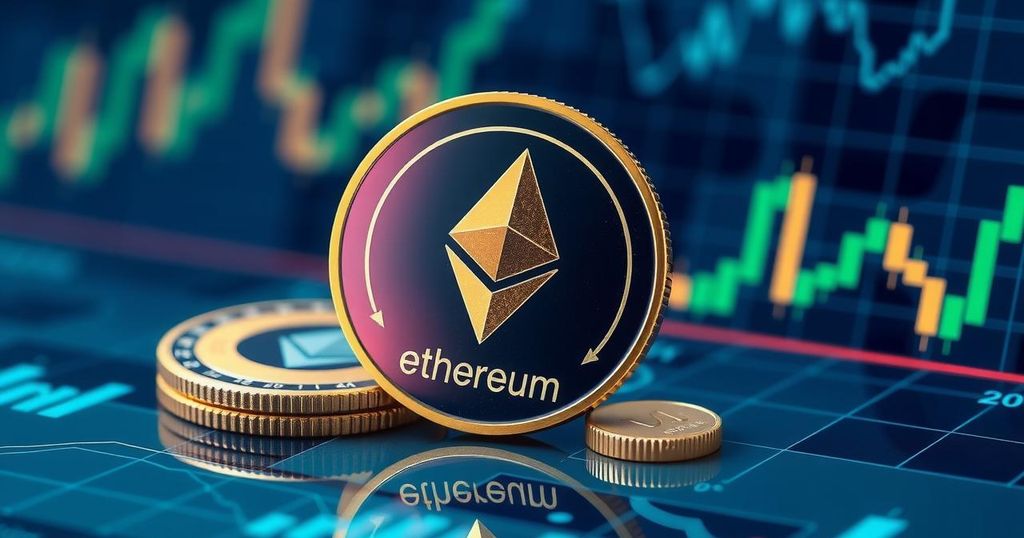Ethereum Stays Above $1800 as Development Efforts Shift Following EOF Removal
Ethereum (ETH) remains above $1,800, showing some strength despite being down 45% from its peak. The Ethereum Foundation has removed the EOF upgrade from its roadmap, now focusing on the PeerDAS solution and restructuring its leadership. Technical indicators point to possible upward movement, while upcoming events like the May 7 Pectra upgrade could significantly impact prices and investor sentiment.
Ethereum (ETH) is currently maintaining its position above the $1,800 mark, reflecting a degree of resilience amid a volatile market climate. Although the cryptocurrency remains down around 45% from its all-time high, it has managed to bounce back nearly 30% since hitting lows of approximately $1,386 in April. Market observers are keeping a close eye on Ethereum as development priorities shift after key updates.
Recently, the Ethereum Foundation made a notable change by removing the controversial EVM Object Format (EOF) upgrade from its upcoming Fusaka hard fork, scheduled for Q3 to Q4 of 2025. Developer Tim Beiko cited “technical uncertainty” as a driving factor, expressing concerns about potential delays. This announcement followed an unprecedented Interop Testing call with over 100 participants, leading to the decision that EOF would no longer be pursued. Geth developer Marius van der Wijden remarked, “We don’t agree, and we’re not coming to an agreement about EOF anymore, and so it has to go.”
With EOF dropped from the roadmap, development will now concentrate on Peer Data Availability Sampling (PeerDAS), which is deemed essential for scaling. The Ethereum Foundation noted the importance of careful planning, stating that “the cost of shipping the wrong thing is much higher than the cost of delaying.” This strategic redirection aims to enhance Ethereum’s scalability and functionality moving forward.
In line with these technological shifts, the Ethereum Foundation announced a leadership restructuring on April 28. Co-founder Vitalik Buterin, along with Foundation President Aya Miyaguchi, Swiss attorney Patrick Storchenegger, and others, are now co-executive directors. The new leadership is set to prioritise three key areas over the next year: scaling at both Layer 1 and Layer 2 levels, and improving the overall user experience.
From a technical analysis perspective, Ethereum’s outlook appears somewhat optimistic. The hourly MACD shows positive momentum, as ETH trades above $1,770 and the 100-hourly Simple Moving Average. Resistance levels are identified at $1,820 and a secondary resistance at $1,850. If Ethereum can break through these levels, it has the potential to approach the psychological barrier of $2,000; however, if it falls below $1,770, drops to as low as $1,650 could be on the horizon.
Looking ahead, forecasts for Ethereum into 2025 suggest a mix of cautious optimism and challenges. Research from Fidelity Digital Assets indicates a pessimistic short-term view, exacerbated by declining technical signals. However, the MVRV Z-Score is dipping into the “undervalued” zone, suggesting that long-term investors might find an entry point. Meanwhile, Layer 2 transaction volumes saw an 11% drop, signalling a slight decrease in on-chain activity in the first quarter.
Several upcoming catalysts could significantly affect Ethereum’s price trajectory: The Pectra upgrade on May 7 aims to improve scalability, while the development of PeerDAS could rekindle confidence in Ethereum’s roadmap after the EOF was removed. Additionally, macroeconomic factors, such as a potential Federal Reserve rate reduction later this year, might benefit risk assets, including cryptocurrencies. If Ethereum can sustain its support level over $1,800, it might be poised for a run towards or even above $2,000 — opening doors for long-term investment despite short-term hurdles.




Post Comment